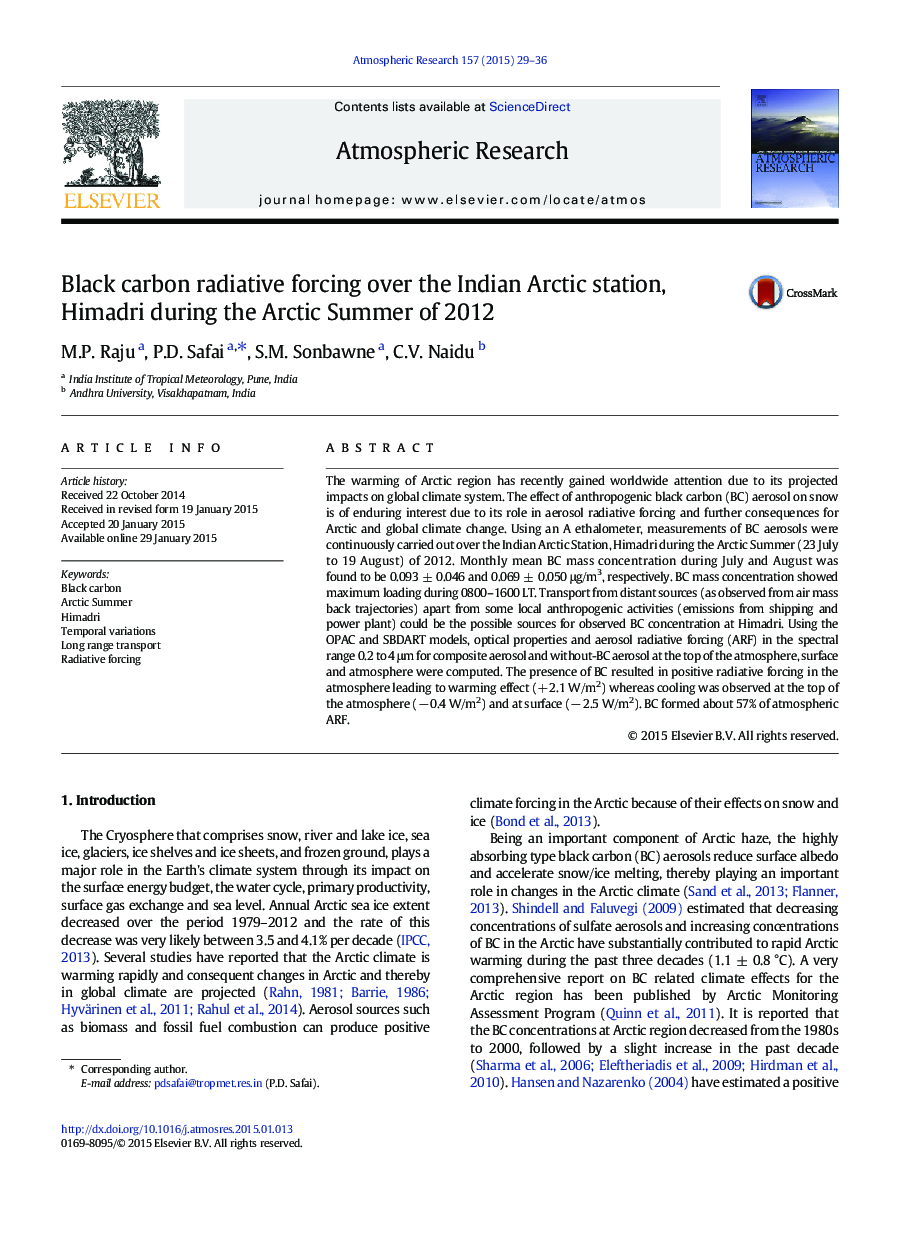| Article ID | Journal | Published Year | Pages | File Type |
|---|---|---|---|---|
| 4449796 | Atmospheric Research | 2015 | 8 Pages |
•BC at Indian Arctic Station is mainly due to long range transport and emissions from local human-related activities.•BC mass showed high variation during 0800 to 1600 hrs local time.•BC formed about 57% of atmospheric SW aerosol radiative forcing.
The warming of Arctic region has recently gained worldwide attention due to its projected impacts on global climate system. The effect of anthropogenic black carbon (BC) aerosol on snow is of enduring interest due to its role in aerosol radiative forcing and further consequences for Arctic and global climate change. Using an A ethalometer, measurements of BC aerosols were continuously carried out over the Indian Arctic Station, Himadri during the Arctic Summer (23 July to 19 August) of 2012. Monthly mean BC mass concentration during July and August was found to be 0.093 ± 0.046 and 0.069 ± 0.050 μg/m3, respectively. BC mass concentration showed maximum loading during 0800–1600 LT. Transport from distant sources (as observed from air mass back trajectories) apart from some local anthropogenic activities (emissions from shipping and power plant) could be the possible sources for observed BC concentration at Himadri. Using the OPAC and SBDART models, optical properties and aerosol radiative forcing (ARF) in the spectral range 0.2 to 4 μm for composite aerosol and without-BC aerosol at the top of the atmosphere, surface and atmosphere were computed. The presence of BC resulted in positive radiative forcing in the atmosphere leading to warming effect (+ 2.1 W/m2) whereas cooling was observed at the top of the atmosphere (− 0.4 W/m2) and at surface (− 2.5 W/m2). BC formed about 57% of atmospheric ARF.
